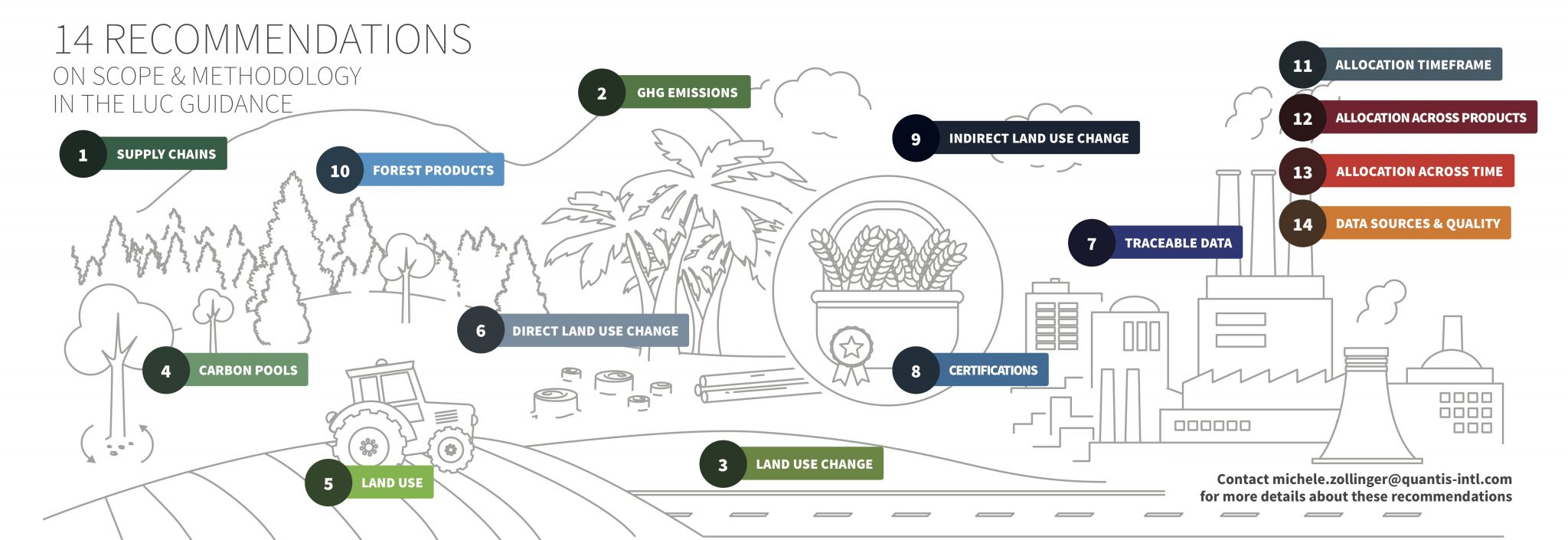News from Triple Pundit
September 5, 2017
[av_hr class=’invisible’ height=’20’ shadow=’no-shadow’ position=’center’ custom_border=’av-border-thin’ custom_width=’50px’ custom_border_color=” custom_margin_top=’30px’ custom_margin_bottom=’10px’ icon_select=’yes’ custom_icon_color=” icon=’ue808′ font=’entypo-fontello’ av_uid=’av-14kabfz’]

Image courtesy of Quantis
Committed companies, non-profits, scientists and diverse sustainability stakeholders teamed up with Quantis to deliver a groundbreaking guidance on accounting for greenhouse gas emissions from land use change, which is expected to shape the future of climate, forestry and agriculture.
BOSTON, Sep. 05 /CSRwire/ – The environmental sustainability consulting group Quantis is proud to announce the release of the “Land Use Change Guidance: Accounting for GHG Emissions in the Supply Chain” (Learn more about the LUC Guidance on the Quantis website).
This groundbreaking initiative is the fruit of a pre-competitive consortium, convened by Quantis, which includes over 40 contributors from private companies, NGOs, governments, and scientific institutions. These key players joined together for a common goal: to develop a scientifically accurate reference to support companies to account for the climate change impacts, or greenhouse gas (GHG) emissions, of their efforts on deforestation, sustainable forests and agriculture and other types of land use. The result is the LUC Guidance, which is now entering a pilot phase to implement its recommendations and methodology.
Forests cover 30% of our land , providing vital resources to humans and wildlife as well as raw materials for manufacturing. Because they store vast amounts of carbon, forest burning and exploitation is a major contributor to man-made GHG emissions responsible for climate change. The World Bank development indicators show that, since 1990, the world’s lost the equivalent of 1,000 football fields of forest every hour. This loss impacts water cycles, biodiversity, soil erosion, for example, jeopardizing arable land and ultimately our capacity to feed a global population set to reach 9 billion by 2050.
Taking measures to reduce deforestation and other land use impacts could capture as much as a sixth of the carbon necessary to reach global climate targets, according to the UN-endorsed Bonn agreement on deforestation. Corporations that rely heavily on agriculture and forestry strive to tap into this cost-effective lever and positively affect climate. As these companies set objectives to align with science-based goals, a formal methodology is needed to guide them towards embedding land use-generated emissions in their corporate and product footprints.
[av_hr class=’invisible’ height=’50’ shadow=’no-shadow’ position=’center’ custom_border=’av-border-thin’ custom_width=’50px’ custom_border_color=” custom_margin_top=’30px’ custom_margin_bottom=’30px’ icon_select=’yes’ custom_icon_color=” icon=’ue808′ font=’entypo-fontello’ av_uid=’av-qrg34f’]
